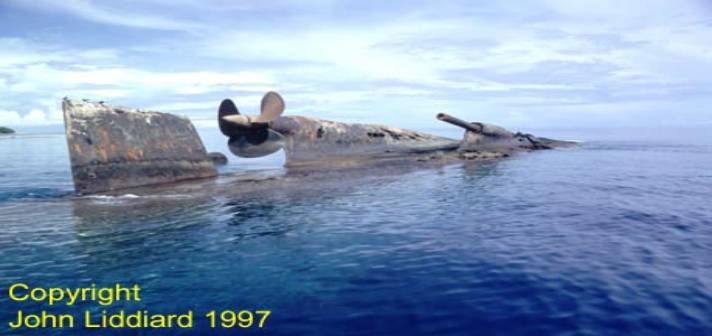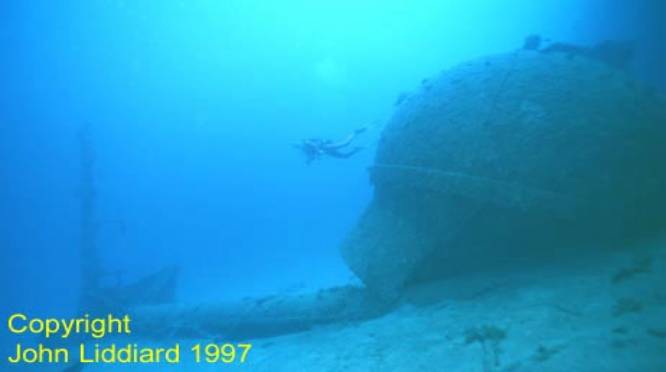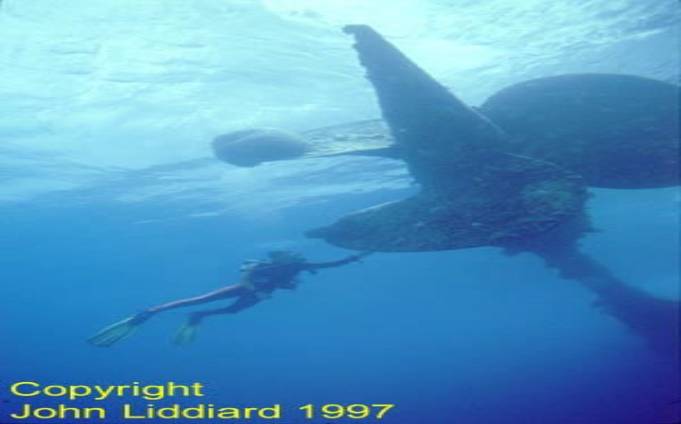
|
Heavy Cruiser Prinz Eugen Back to Home Page |

|
|
There is a cute twist to this story. As you can see this ship had been launched in October 1938, naturally amidst copious amounts of hoo-haa, pomp and ceremony; this fine ship should be strong, unbeatable, etc, etc. Eugen, the owner of this web site was born in March 1939 and about the time the Prinz Eugen was launched, his mother-to-be had been given the glorious news that she was expecting. Well, what expectant German mother of that era wouldn't have wanted her son to be strong, unbeatable and the rest of it! " If it's a son, he shall be named Eugen" she declared ... and so it came that, as planned, a little Eugen entered this world! What a world indeed! In and out of bomb shelters, being shot at on the way to school, or more correctly, the ruins of a school, where morning and afternoon classes made do with a few rooms left intact, and Eugen himself living in a pantry, sleeping on cardboard boxes ... what a world indeed! Eugen eventually emmigrated to Australia in 1960.
But why did
the German Navy pick the name 'Prinz Eugen'?
... Well, there had been this very famous
Feldmarschall, Prinz von Savoyen, known as
" 'Prinz
Eugen', der edle Ritter " who
lived from 1663 to 1736 and although at times
he had been outnumbered 100:1, he, in landmark battles in
1697 at Zenta defeated the until then
all-conquering barbarian army. Prinz Eugen
thereby had saved Europe from the barbarians.
He also had been a patron of the arts and
sciences, see Castle Belvedere, Vienna.
Now
back to the war ships story.
These heavy cruisers of the Kriegsmarine had resulted from the Washington Fleet Treaty of 1921, the so called " Washington Cruisers ". Their displacement was not to exceed 10.000 tons and their main artillery was limited to 8 " (20,3 cm) guns, but in reality they were up to 60% bigger than allowed.
Between 1935 and 1937 the keels of five of these ships were laid down, and they belonged to two slightly different classes of ships: The Admiral Hipper and her sister Ship Blücher, the improved second batch consisting of the Prinz Eugen, Seydlitz and Lützow. The last two were originally planned to be big CLs with an armament of twelve 15 cm guns, but due to the lack of guns and turrets and the threat of a new class of Soviet cruisers, the ships were built as additional ships of the Prinz Eugen design. Those ships were designed with the idea of commerce war in mind, they should attack allied merchant shipping and evade allied warships, but it soon had become obvious that they were not ideal for this task at all. With their high-pressure steam engines, their fuel consumption was far too high and their operational range was not big enough to be ideal for the North Atlantic. In addition, the complicated engine construction often broke down. Of the five ships, only three got completed at all.
The Admiral Hipper was destroyed by her own crew in the final days of the war. Blucher was sunk on April 9th 1940 in the Oslo fjord. The Prinz Eugen, often called the " lucky ship " was the only major German warship that had survived the war but the Eugen eventually capsized and sunk after being subjected to terrible atomic bomb tests near Kwajalein Atoll. One of her floatplanes, the T3 + BH, is now in the 'Silverhill Storage Facility' of the Smithsonian. Lützow was sold uncompleted to Russia in 1940 and was never completed. She was scrapped in the late 1950s. The Seydlitz was to be converted into an aircraft carrier, but was never completed either. The ship had been captured by the Russians in Königsberg and scrapped in 1958.
|
July 1940 |
Before commissioned, the Prinz Eugen was twice hit by British bombs in the Germaniawerft, Kiel |
||||||||||||||||||||
|
01.08.1940 |
Commissioned |
||||||||||||||||||||
|
December 1940 |
Trials and training in the Baltic Sea, battle drills. |
||||||||||||||||||||
|
December 1940 |
Final construction work in Kiel |
||||||||||||||||||||
|
January - April 1941 |
Training in the Baltic Sea. |
||||||||||||||||||||
|
18.05.1941 |
Operation "Rheinübung" |
||||||||||||||||||||
|
21.05.1941 |
Anchoring in the Kors Fjord, Prinz Eugen and BB Bismarck are spotted by British air reconnaissance |
||||||||||||||||||||
|
24.05.1941 |
Battle with British BC Hood and BB Prince of Wales. Prinz Eugen scores the first hit on the Hood which later explodes in the battle. After the Battle, in which the PoW is damaged too, the Prinz Eugen is sent off in the North Atlantic while the Bismarck tried to escape to France. |
||||||||||||||||||||
|
29.05.1941 |
Returns to Brest because of engine problems |
||||||||||||||||||||
|
02.07 1941 |
Hit by a bomb in dock in Brest |
||||||||||||||||||||
|
11.02.1942 |
Operation
"Cerberus": |
||||||||||||||||||||
|
23.02.1942 |
Lost stern after a torpedo hit from the British submarine Trident outside the Drontheim Fjord while on transfer t Norway |
||||||||||||||||||||
|
May - October 1942 |
Repairs in Kiel |
||||||||||||||||||||
|
November 1942 |
Battle training in Baltic Sea together with Panzerschiff Lützow |
||||||||||||||||||||
|
January 1943 |
Two unsuccessful transfer attempts to Norway |
||||||||||||||||||||
|
May 1943 |
Used as a training ship |
||||||||||||||||||||
|
July 1944 |
Stationed at the Finnish coast |
||||||||||||||||||||
|
August 1944 |
Shore bombardment at the Kurland front line |
||||||||||||||||||||
|
October 1944 |
Supported retiring German Army at Memel |
||||||||||||||||||||
|
15.10.1944 |
Collides CL Leipzig north of Hela, only light damage to the Prinz |
||||||||||||||||||||
|
November 1944 - April 45 |
Continued support of the German Army |
||||||||||||||||||||
|
08.04.1945 |
Prinz Eugen sails to Copenhagen. |
||||||||||||||||||||
|
May 1945 |
Placed under British command |
||||||||||||||||||||
|
December 1945 |
Handed over to the U.S., renamed as USS IX 300. |
||||||||||||||||||||
|
13.01.1946 |
Sails to the United States |
||||||||||||||||||||
|
10.05.1946 |
Transferred to Honolulu |
||||||||||||||||||||
|
01.07.1946 |
Used in atomic bomb test "Able", only light damage |
||||||||||||||||||||
|
25.07.1946 |
Used in atomic bomb test "Baker", ship took some damage below the waterline. After the tests, the Prinz is towed to Kwajalein Atoll. |
||||||||||||||||||||
|
22.12.1946 |
After six days of increasing list, the Prinz Eugen finally capsizes and sinks. |
||||||||||||||||||||
|
|
|
|
|||||||||||||||||||
|
|
|
|
The Prinz Eugen In May 1941 the German super battleship Bismarck steamed into the North Atlantic escorted by the 14,800 ton heavy cruiser the Prinz Eugen. The German ships were intercepted by the British battle cruiser Hood and battleship Prince of Wales. During the ensuing battle, the lighter armour of the battle cruiser Hood proved to be its downfall. Following a series of direct hits the magazine was penetrated and the resulting explosion tore the Hood in two.
For the remainder of the War the Prinz Eugen saw little action other than a dash up the English Channel to Norway. Following the German surrender, the Prinz Eugen was turned over to the Royal Navy. In 1946 the Prinz Eugen was used as a target at the Bikini Atoll atomic bomb tests. The ship survived two atomic bomb explosions and was subsequently towed to the US base at Kwajalein atoll for full evaluation of the damage. At Kwajalein the previously controllable leaks worsened and the Prinz Eugen capsized and sank.
My first sight of the Prinz Eugen was from the Continental Air Micronesia 727 as it banked and turned to land at Kwajalein. The upturned stern was resting on the reef with the rudder and one propeller breaking the surface. Through the tropical water, I could see the outline of the hull descending the slope of the lagoon.
The next morning we
approached the stern of the Prinz
Eugen by boat. I could now see that two out of three propeller shafts
cleared the surface and one of the propellers was missing.
The Prinz Eugen lies at an angle to the reef slope, almost upside down on its starboard side. Beneath the upturned hull, the superstructure is laid out along the sand where the weight of the hull has broken it to the port side. Sufficient superstructure remains to support the hull, allowing access to the turrets and deck. Above the bridge lies the gun director, an odd spherical structure. The starboard propeller makes an ideal decompression station. Corals have become established on the blades of the propeller and the upturned hull. It is easy to spend decompression stops exploring this artificial reef and playing tag with the fish.
Other wrecks at Kwajalein Atoll include a selection of Japanese
freighters and inter-island supply boats sunk by air attack during
1943 and 1944.
See
also www.bikiniatoll.com
The Prinz as photographed in 1997
Stern of the Prinz -

Gun director -

The propeller -

End of the Prinz's story . . . . what a story !
...
 UP UP |
|
This page updated by Eugen on 23 Jan 2016. Click your browser's REFRESH button if in doubt. Cheers ... and have a nice day ! |